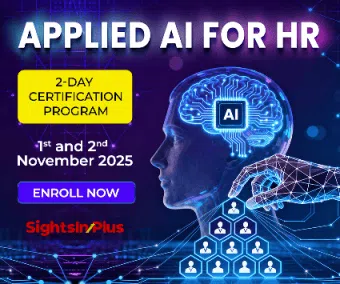Top Performance Management Trends to Look-out for in 2021
COVID-19 has fundamentally changed the world of work. Performance management systems have experienced a significant shift in view and effectiveness over the past few years, but pandemic accelerated the process further.
As organizations reflect on the past year, effectiveness of performance management measures in new normal has become a crucial part of employee experience and meeting business objectives.
Organizations rely on performance management to drive performance, enhance engagement, meet their goals, and take decisions pertaining to compensation, promotion, and succession planning. On the other hand, employees try to understand organizational goals and priorities with the help of performance management.
Most common complaints about performance management comes from are lack of objectivity, negative or no return on investment, complex process which consumes too much time.
A Gartner’s poll of HR leaders earlier in 2020 showed that 87% of HR leaders were considering changes to performance reviews. However, 2021 is different because of impact from COVID disruption.
Given the current situation where most of the organizations are in recovery or renewal phase and employee expectations are skyrocketing because of disruption in performance review cycle last year, following trends indicate 2021 well.
Data-Driven Performance Management
As the saying from W. Edwards Deming goes, In GOD we trust, rest all should bring data.
Due to technological development and because of remote working conditions, collection, analysis, and reporting of data became critical in 2020, and it will only grow further in 2021.
HR is already applying analytics to a wide variety of metrics, covering engagement, absenteeism, turnover rates, net promoter scores, revenue per employee, etc.
By integrating HR-related analytics with performance management tools, organizations are able to maximize increase the objectivity of overall process. Performance-related data can be collated from various dashboards, MIS, CRMs, etc. This integration helps individuals and teams track their progress in real-time with greater accuracy.
From this data, key issues in performance management can be identified and addressed in real-time rather than waiting for the review cycle.
Continuous Performance Management Continues to Grow
In 2018, 76% of the companies that Deloitte surveyed in their Human Capital Trends study had reinvented their performance management processes. With the objective of making performance management more continuous and holistic.
It’s a brave new day for performance management. The old PM methodology was punitive and negative in nature and no wonder that the bell curve-based performance management system is one of the least liked employment practices.
Thankfully is it is slowly dying off and this trend will gain momentum in 2021. The practice of awarding a bonus or promotion based on your ranking will eventually become irrelevant.
Continuous performance management does away with the once or twice a year performance review. In its place, you have regular check-ins followed by weekly feedback and course correction meetings between employees and management.
Importance of Employee Experience will Increase Further
Performance management is an integral part of overall employee experience (EX).
Performance conversation is one of the important elements of engagement. Organizations are now coming to realize that performance management conversations are about engaging with the whole person and not just with the work that they are assigned.
Performance management does impact employees’ thoughts, feelings, decisions, and overall experience. A positive employee experience supports them and enables them to do their jobs to the best of their ability.
Another aspect of EX with reference to performance management is sense of fairness on overall process and this is where data plays an important role.
If employees are given excellent experience through the performance management cycle, it will help improve engagement, productivity, effectiveness and profitability amongst others.
A Greater Focus on Well-Being
Wellbeing was already a priority and COIVD 19 increased its importance by many folds. This trend will continue as more and more decision-makers come to realize that when they care for the well-being of their employees, their employees can do their best work.
All eight dimensions of wellbeing including emotional, spiritual, intellectual, physical, environmental, financial, occupational, and social are important and disbalance in any of these may lead to well-being issues.
Business have started acknowledging that wellbeing and performance management are very much related. The performance management process gives employees and managers an opportunity to set clear expectations which reduce chances of stress that is triggered by uncertainty and a lack of guidance. Performance management is also a time for two-way feedback and it allows employees to share if they are feeling overwhelmed or unsupported. With this information managers are well equipped to raise concerns on worrying behaviours, dig deep to understand the challenges, and support employees on the matters that may trigger wellbeing issues later.
Mentorship to Support Performance
According to a recent survey by a leading niche media organization covering 250 companies, it was found that 75% of HR managers mentioned that constant communication, collaboration, and coaching are the most important aspects of a performance culture.
Mentoring in performance management starts from the onboarding stage where the mentor is assigned during onboarding who takes a keen interest in success of the new hire. This helps overall performance management. Likewise, functional expertise mentoring, high potential mentoring, and succession planning mentoring are other trends to look out for.



